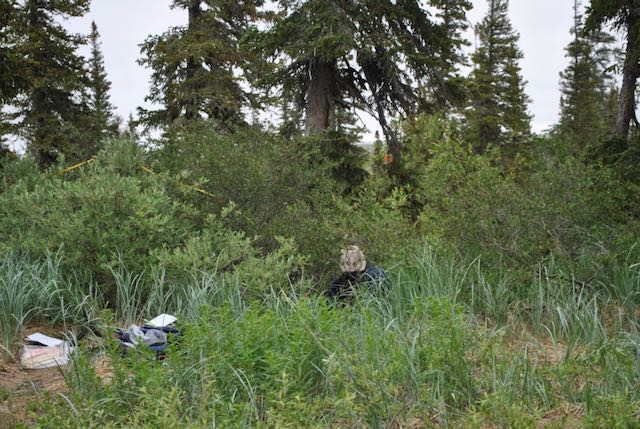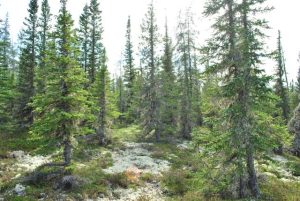Where the Red Fox Dens: Fox dens foster tree growth, according to new study
September 13, 2022
For immediate release
Media contact: Heidi Swanson, (202) 833-8773 ext. 211, gro.asenull@idieh
Author contact: John Markham, ac.abotinamunull@mahkram.nhoj
Foxes are beautiful, charismatic creatures that enrich any landscape – sometimes quite literally.
A study published today in the Ecological Society of America’s journal Ecosphere reveals that trees growing on and around the sites of fox dens, especially long-established fox dens, grow faster than trees without vulpine intervention.
“Fox dens are cool to study because they’re uncontrolled, but long-term experiments,” said John Markham, a professor at the University of Manitoba and corresponding author of the paper. “They’re fertilizing the same location for hundreds of years. We can use them as a proxy for what happens when you add nutrients to the soil.”

Markham and his team studied fox den sites, like this one, to understand the effects of fox dens on tree growth. Photo by John Markham.
Markham and his team study foxes in boreal forests and Arctic tundra. This study took place on the margins of the two. The research team compared tree ring cores between sites with foxes and those without. Fox dens are hugely nutrient-rich areas, thanks to generations of fox scat and prey leftovers.

In areas where foxes den, like this one, trees grow faster, thanks to additional nutrients in the soil. Photo by John Markham.
Fox dens are the landed gentry of the wildlife world. Foxes use specific dens for generations; some of the known fox dens in Canada were mapped back in the 1990s and are still in use. Even if they are left empty for a generation or two, due to shifting environments or population forces, foxes will eventually return. Even when a den is not in use as a permanent site to rear pups, fox families may still use it during day trips when they’re crossing the landscape.
Markham theorizes that fox dens can shape the landscape by maximizing tree growth, sometimes enabling the tree line to move farther into tundra landscape than it would otherwise. Trees on the fox den sites grew 55 percent more than trees on control sites without fox dens – a trend that showed up very clearly in their rings.
“On a couple of dens, a cool thing we noticed is that if you go far enough back in time, there are no differences in tree ring growth,” Markham said. “Then, all of a sudden, the trees start growing much better. That’s a pretty clear indication that that’s when the foxes arrived.”
Fox excrement and the remains of their prey – bones, gristle, hair and anything else they don’t eat – mix with the soil to improve the nutrient levels. These improved nutrients shape their habitat, nurture tree growth, and in some cases even change what plants can grow there.

In the absence of an established fox den, tree growth is limited by low nitrogen levels as well as a cold, harsh climate. Photo by John Markham.
“Someone who knows the environment can sometimes spot fox dens just by noticing what shrubs are nearby,” Markham said. “A number of other studies have looked at the changes in vegetation fox dens bring to a site – even identifying them using spectral mapping from satellites – but ours is the first study to link long-term tree growth with fox dens. These animals are providing a decade after decade benefit for the trees. The tree rings are a nice, clear indication of how these animals promote tree growth, and perhaps tree reproduction.”
Markham and his team are taking the study a step further and analyzing whether the increased nutrients around fox dens result in improved tree reproduction, as well as growth.
“In cold, harsh, nutrient-poor environments like this, any little boost helps plants survive and grow,” Markham said. “For years, ecologists have been using this idea of ecosystem engineers, of animals that bring nutrients into the forest. It’s become part of the ecological collective knowledge, but the actual, specific effects and pathways aren’t completely understood. Our work is a first step in understanding that broader process.”
###
The Ecological Society of America, founded in 1915, is the world’s largest community of professional ecologists and a trusted source of ecological knowledge, committed to advancing the understanding of life on Earth. The 9,000 member Society publishes five journals and a membership bulletin and broadly shares ecological information through policy, media outreach, and education initiatives. The Society’s Annual Meeting attracts 4,000 attendees and features the most recent advances in ecological science. Visit the ESA website at https://ecologicalsocietyofamerica.org.
Follow ESA on social media:
Twitter – @esa_org
Instagram – @ecologicalsociety
Facebook – @esa.org